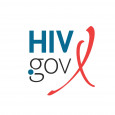This post is from Admiral Rachel L. Levine, MD, Assistant Secretary for Health, U.S. Department of Health and Human Services
On December 1, we observe the 37th World AIDS Day: a time to remember those we have lost to AIDS-related illnesses, honor the 39 million people who are living with HIV worldwide, and reaffirm our commitment to ending HIV. This year’s theme, “Collective Action: Sustain and Accelerate HIV Progress,” reminds us that we must remain steadfast in our commitment to prevent new HIV infections and provide essential services to all people with HIV. It takes all of us working together to implement the tools and resources we have to prevent and treat HIV, centering our work on those with lived experience.
HIV Organ Policy Equity (HOPE) Act
We continue to innovate and adapt initiatives based on new scientific advancements, implementation research, and lessons learned from programs in the field. This World AIDS Day, the Biden–Harris Administration has taken another step forward in leading with science and destigmatizing HIV. The Administration has published a final rule removing the HOPE Act research requirements currently in place for transplants of kidneys and livers from donors with HIV to recipients with HIV. This change expands the kidney and liver donor network nationwide. This change will result in more utilization of viable kidney and liver transplants and help to reduce stigma and health disparities associated with HIV.
National HIV/AIDS Strategy/EHE
We continue to see other signs of progress in achieving the goals of the National HIV/AIDS Strategy, and that progress is informing efforts to develop the next Strategy, which will cover 2026–2030. The Ending the HIV Epidemic in the U.S. (EHE) initiative is a leading component of the work by the U.S. Department of Health and Human Services (HHS)—in collaboration with state, tribal, territorial, and local partners—to implement the Strategy. Important progress has included increases in HIV testing, rapid linkage to and re-engagement of people with HIV to medical care and treatment, and improved detection and rapid response to communities experiencing rapid transmission of HIV. HHS has worked to ensure communities have access to long-acting injectables for both HIV prevention and treatment, sharing the message of U=U (undetectable equals untransmittable). HHS has also worked to increase uptake of pre-exposure prophylaxis (PrEP).
Looking Ahead
Yet challenges remain. In too many communities, we still need to address stigma and increase education and access to HIV-related services. With adequate funding and continued leadership and innovation, we can sustain and accelerate our progress toward ending the HIV epidemic.
I am an optimist. In my nearly 4 years as the Assistant Secretary for Health, I have been fortunate to travel across the United States and talk about HIV policy and programs with passionate advocates, people with HIV, health care providers, community organizations, public health officials, and tribal leaders. These conversations have bolstered me and shored up my resolve about our ability to end the HIV epidemic as we know it.
My commitment to the HIV response began during the early days of the epidemic while working in New York City as a pediatrician. As you can imagine, that experience informed my personal commitment to being here when we end this epidemic. I know that achieving that is possible due to advances in HIV research and the strength and resilience of the HIV community.
This blog post was published November 29, 2024, on HIV.gov.








Comments
Comments